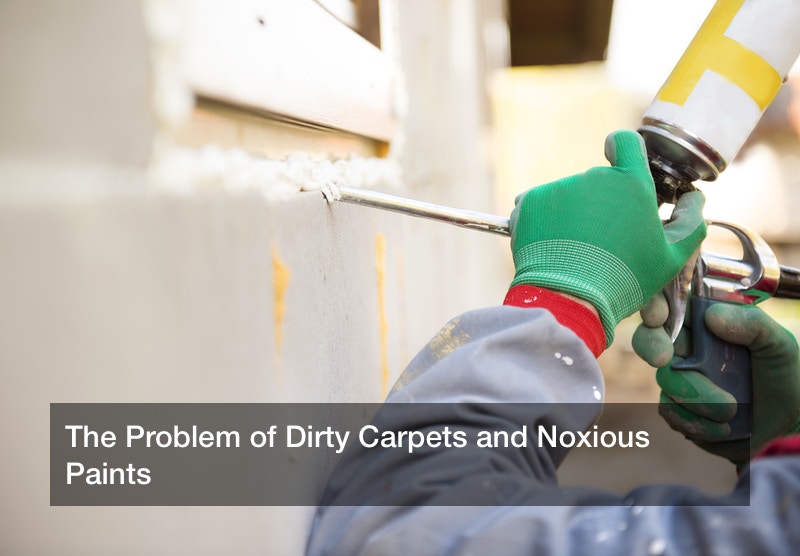

A homeowner may be concerned not only with repairing utilities and hardware such as the plumbing and the heating and cooling system, but also the quality of the air inside the home. Some homeowners may be surprised to learn that indoor air tends to have two to five times as many VOC particles as outdoor air, or “volatile organic compounds.” These particles are not lethal, nor will they hospitalize someone unless they have a severe allergy or asthma (w3hich may indeed be the case). But these VOCs, and paint fumes in general, are quite harmful all the same, and many avoidable cases of asthma, allergies, and cognitive decline may be avoided if a homeowner uses the right products such as safe clear varnish on wood, air cleaning paints, odorless paint, clean carpets, and more. These odorless paints and baby-friendly paints may be found at a hardware store when a customer specifies that they want VOC-friendly odorless paint or hypoallergenic wooden products.
The Problem of VOCs and Fumes
As mentioned earlier, VOCs are not actually lethal in most cases, but they are noxious and may cause a number of health problems that anyone would want to avoid if possible. VOCs come from dirty carpets and rugs, along with certain paint or varnish that may be used in home improvement projects. These volatile organic compounds are known to reduce cognitive function as well as set off asthma attacks or allergies, or even cause someone to develop those conditions.
Children and babies are particularly vulnerable to this. A study conducted in Sweden sought to measure VOC levels where children are concerned, and the results were clear. Data showed that children whose bedrooms had PGE concentrations in the top 25% among all study participants were 100% more likely to have asthma. Not only that, but these children who faced high PGE levels were 150% more likely to have eczema, and 320% more likely to have rhinitis.
That’s not all, as VOCs are also a hazard for adults and their cognitive functions as well as asthma or allergies. A recent study created a low-VOC work environment for study participants, using typical VOC levels at other offices as a control group. For six days, these workers were exposed to low VOC levels that were only 50 micrograms per cubic meter of air. These workers were also exposed to 40 cubic feet of outdoor air each. Afterwards, data showed that these workers performed (on average) 101% better on cognitive scores than workers from a control group work space. Office managers always want their employees to be sharp and productive, so one strategy may be to lower VOC levels in the office air. Some offices are known to have quite dirty air due to filthy carpets and grime in the air conditioning, which increases rates of asthma and sick days. But that can be changed.
Dealing With VOCs and Paint Fumes
Some paints, and most dirty carpets, are giving off VOCS or fumes that harm the health of anyone who’s exposed to nearby air, so office managers and homeowners can take some steps to deal with this and prevent heavy VOC exposure. For one thing, carpets should be diligently cleaned, since carpets are known to soak up a lot of dirt, dust, and other filth and thus release a lot of VOCs for years. Regular vacuuming, along with deep cleaning work, will lower VOC emissions since the carpets are cleaned out, and a maid service can be hired for an office or for a home whose owner is often busy. Very old carpets might be replaced entirely.
Homeowners who are performing home improvement with painting the walls or a baby crib are urged to only buy VOC-friendly and odorless paints, and hypoallergenic paints for a baby crib or room. A discerning homeowner can visit a hardware store and explain their needs to a store associate, who in turn will direct them toward brands of odorless paint, hypoallergenic paint and wood varnish, and other materials that they stock. And someone who buys a new rug may take it outdoors and beat it to remove most dust and dirt before placing it indoors. All this can go a long way toward improving air quality for everyone.
